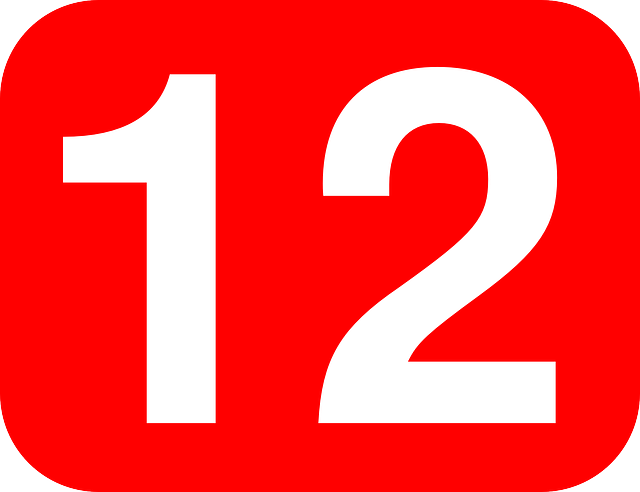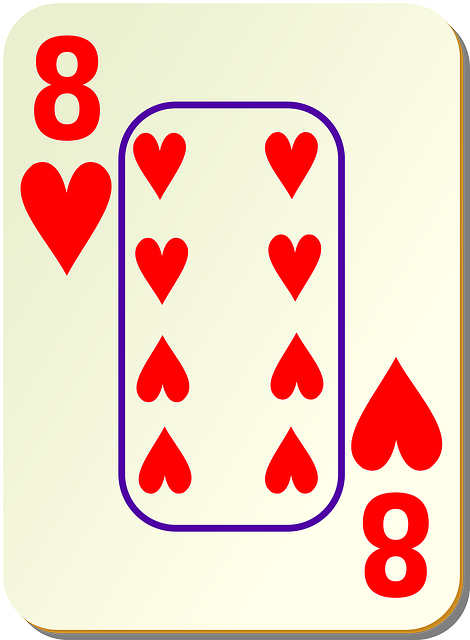مواضيع في فهم التعمية
التعمية (cryptography) هي ممارسة ودراسة إخفاء البيانات؛ تتقاطع في فهم التعمية المعاصر جميع من الهندسة والرياضيات وفهم الحاسوب. يحظى هذا الفهم اليوم بمكانة مرموقة بين العلوم، إذ تنوعت تطبيقاته العملية لتضم مجالات متعددة نذكر منها: المجالات الدبلوماسية والعسكرية، والأمنية، والتجارية، والاقتصادية، والإعلامية، والمصرفية والمعلوماتية، ومن تلك التطبيقات: التجارة الإلكترونية وحدثات سر الحاسوب، وبطاقات إي تي إم.
The following outline is provided as an overview of and topical guide to cryptography:
Essence of cryptography
- Main article: Cryptography
- Cryptographer -
- Encryption/Decryption -
- Cryptographic key -
- Cipher -
- Ciphertext -
- Plaintext -
- Code -
- Tabula recta -
- Alice and Bob -
Uses of cryptographic techniques
- Commitment schemes -
- Secure multiparty computations -
- Electronic voting -
- Authentication -
- Digital signatures -
- Crypto systems -
- Dining cryptographers protocol - by David Chaum
- Anonymous remailer -
- Pseudonymity -
- Anonymous internet banking -
- Onion routing -
Branches of cryptography
- Cryptographic engineering -
- Multivariate cryptography -
- Quantum cryptography -
- Steganography -
- Visual cryptography -
History of cryptography
- Japanese cryptology from the 1500s to Meiji -
- World War I cryptography -
- World War II cryptography -
- Reservehandverfahren -
- Venona project -
- Ultra -
Ciphers
Classical
- Autokey -
- Permutation -
- Polyalphabetic -
- Vigenère -
- Polygraphic -
- Playfair - by Charles Wheatstone
- Hill -
- Substitutions -
-
- Caesar -
- ROT13 -
- Affine -
- Atbash -
- Transposition -
- Scytale -
- Grille -
- VIC - complex hand cypher used by at least one Soviet spy in the early 1950s, it proved quite secure for the time
Modern
Symmetric-key algorithms
- Stream ciphers
-
- A5/1 & A5/2 - cyphers specified for the GSM cellular telephone standard
- BMGL -
- Chameleon -
- FISH - by Siemens AG
- WWII 'Fish' cyphers -
- Geheimfernschreiber - WWII mechanical onetime pad by Siemens AG, called STURGEON by Bletchley Park
- Pike - improvement on FISH by Ross Anderson
- Schlusselzusatz - WWII mechanical onetime pad by Lorenz, called tunny by Bletchley Park
- HELIX -
- ISAAC - intended as a PRNG
- Leviathan -
- LILI-128 -
- MUGI - CRYPTREC recommendation
- MULTI-S01 (CRYPTREC recommendation)
- One-time pad - Vernam and Mauborgne, patented mid-'20s; an extreme stream cypher
- Panama -
- RC4 (ARCFOUR) - one of a series by Professor Ron Rivest of MIT; CRYPTREC recommended limited to 128-bit key
- CipherSaber - (RC4 variant withعشرة byte random IV, easy to implement
- Salsa20 - an eSTREAM recommended cipher
- SEAL -
- SNOW -
- SOBER -
- SOBER-t16 -
- SOBER-t32 -
- WAKE
- Block ciphers
-
- Product cipher -
- Feistel cipher - pattern by Horst Feistel
- Advanced Encryption Standard (Rijndael) - 128 bit block; NIST selection for the AES, FIPS 197, 2001—by Joan Daemen and Vincent Rijmen; NESSIE selection; CRYPTREC recommendation
- Anubis - 128-bit block
- BEAR - built from a stream cypher and hash function, by Ross Anderson
- Blowfish - 64 bit block; by Bruce Schneier et al.
- Camellia - 128 bit block; NESSIE selection (NTT & Mitsubishi Electric); CRYPTREC recommendation
- CAST-128 (CAST5) - 64 bit block; one of a series of algorithms by Carlisle Adams and Stafford Tavares, insistent that the name is not due to their initials
- CAST-256 (CAST6) - 128-bit block; the successor to CAST-128 and a candidate for the AES competition
- CIPHERUNICORN-A - 128 bit block; CRYPTREC recommendation
- CIPHERUNICORN-E - 64 bit block; CRYPTREC recommendation (limited)
- CMEA - cipher used in US cellphones, found to have weaknesses.
- CS-Cipher - 64 bit block
- Data Encryption Standard (DES) - 64 bit block; FIPS 46-3, 1976
- DEAL - an AES candidate derived from DES
- DES-X - a variant of DES to increase the key size.
- FEAL -
- GDES - a DES variant designed to speed up encryption
- Grand Cru - 128 bit block
- Hierocrypt-3 - 128 bit block; CRYPTREC recommendation
- Hierocrypt-L1 - 64 bit block; CRYPTREC recommendation (limited)
- IDEA NXT - project name FOX, 64-bit and 128-bit block family; Mediacrypt (Switzerland); by Pascal Junod & Serge Vaudenay of Swiss Institute of Technology Lausanne
- International Data Encryption Algorithm (IDEA) - 64 bit block;James Massey & X Lai of ETH Zurich
- Iraqi Block Cipher (IBC) -
- KASUMI - 64-bit block; based on MISTY1, adopted for next generation W-CDMA cellular phone security
- KHAZAD - 64-bit block designed by Barretto and Rijmen
- Khufu and Khafre - 64-bit block ciphers
- LION - block cypher built from stream cypher and hash function, by Ross Anderson
- LOKI89/91 - 64-bit block ciphers
- LOKI97 - 128-bit block cipher, AES candidate
- Lucifer - by Tuchman et al. of IBM, early 1970s; modified by NSA/NBS and released as DES
- MAGENTA - AES candidate
- Mars - AES finalist, by Don Coppersmith et al.
- MISTY1 - NESSIE selection 64-bit block; Mitsubishi Electric (Japan); CRYPTREC recommendation (limited)
- MISTY2 - 128 bit block: Mitsubishi Electric (Japan)
- Nimbus - 64 bit block
- NOEKEON - 128 bit block
- NUSH - variable block length (64 - 256 bits)
- Q - 128 bit block
- RC2 - 64-bit block, variable key length
- RC6 - variable block length; AES finalist, by Ron Rivest et al.
- RC5 - Ron Rivest
- SAFER - variable block length
- SC2000 - 128 bit block; CRYPTREC recommendation
- Serpent - 128 bit block; AES finalist by Ross Anderson, Eli Biham, Lars Knudsen
- SHACAL-1 - 160-bit block
- SHACAL-2 - 256-bit block cypher; NESSIE selection Gemplus (France)
- Shark - grandfather of Rijndael/AES, by Daemen and Rijmen
- Square - father of Rijndael/AES, by Daemen and Rijmen
- TEA - by David Wheeler & Roger Needham
- Triple DES - by Walter Tuchman, leader of the Lucifer design team—not all triple uses of DES increase security, Tuchman's does; CRYPTREC recommendation (limited), only when used as in FIPS Pub 46-3
- Twofish - 128 bit block; AES finalist by Bruce Schneier et al.
- XTEA - by David Wheeler & Roger Needham
- 3-Way - 96 bit block by Joan Daemen
- Polyalphabetic substitution machine cyphers
- Enigma - WWII German rotor cypher machine—many variants, any user networks for most of the variants
- Purple - highest security WWII Japanese Foreign Office cypher machine; by Japanese Navy Captain
- SIGABA - WWII US cypher machine by William Friedman, Frank Rowlett et al.
- TypeX - WWII UK cypher machine
- Hybrid code/cypher combinations
- JN-25 - WWII Japanese Navy superencyphered code; many variants
- Naval Cypher ثلاثة - superencrypted code used by the Royal Navy in the 30s and into WWII
Asymmetric key algorithms
-
- ACE-KEM - NESSIE selection asymmetric encryption scheme; IBM Zurich Research)
- ACE Encrypt -
- Chor-Rivest -
- Diffie-Hellman - key agreement; CRYPTREC recommendation
- El Gamal - discrete logarithm
- Elliptic curve cryptography - (discrete logarithm variant
- PSEC-KEM - NESSIE selection asymmetric encryption scheme; NTT (Japan); CRYPTREC recommendation only in DEM construction w/SEC1 parameters
- ECIES - Elliptic Curve Integrated Encryption System, Certicom Corporation
- ECIES-KEM -
- ECDH - Elliptic Curve Diffie-Hellman key agreement, CRYPTREC recommendation
- EPOC -
- Merkle-Hellman knapsack cryptosystem - knapsack scheme
- McEliece -
- Niederreiter cryptosystem -
- NTRUEncrypt -
- RSA - factoring
- RSA-KEM - NESSIE selection asymmetric encryption scheme; ISO/IEC 18033-2 draft
- RSA-OAEP - CRYPTREC recommendation
- Rabin cryptosystem - factoring
- Rabin-SAEP -
- HIME(R) -
- Threshold cryptosystem -
- XTR -
Keys
Authentication
- Public key infrastructure -
- X.509 -
- Public key certificate -
- Certificate authority -
- Certificate revocation list -
- ID-based cryptography -
- Certificate-based encryption -
- Secure key issuing cryptography -
- Certificateless cryptography -
- Merkle tree -
Transport/exchange
- BAN Logic -
- Diffie-Hellman -
- Man-in-the-middle attack -
- Needham-Schroeder -
- Offline private key -
- Otway-Rees -
- Trusted paper key -
- Wide Mouth Frog -
Weak keys
- Brute force attack -
- Dictionary attack -
- Related key attack -
- Key derivation function -
- Key strengthening -
- Password -
- Password-authenticated key agreement -
- Passphrase -
- Salt -
Cryptographic hash functions
- Message authentication code -
- Keyed-hash message authentication code -
- EMAC - NESSIE selection MAC
- HMAC - NESSIE selection MAC; ISO/IEC 9797-1, FIPS and IETF RFC
- TTMAC - (Two-Track-MAC) NESSIE selection MAC; K.U.Leuven (Belgium) & debis AG (Germany)
- UMAC - NESSIE selection MAC; Intel, UNevada Reno, IBM, Technion, & UC Davis
- MD5 - one of a series of message digest algorithms by Prof Ron Rivest of MIT; 128 bit digest
- SHA-1 - developed at NSA 160-bit digest, an FIPS standard; the first released version was defective and replaced by this; NIST/NSA have released several variants with longer 'digest' lengths; CRYPTREC recommendation (limited)
- SHA-256 - NESSIE selection hash function, FIPS 180-2, 256 bit digest; CRYPTREC recommendation
- SHA-384 - NESSIE selection hash function, FIPS 180-2, 384 bit digest; CRYPTREC recommendation
- SHA-512 - NESSIE selection hash function, FIPS 180-2, 512 bit digest; CRYPTREC recommendation
- RIPEMD-160 - developed in Europe for the RIPE project, 160-bit digest;CRYPTREC recommendation (limited)
- Tiger - by Ross Anderson et al.
- Snefru -
- Whirlpool - NESSIE selection hash function, Scopus Tecnologia S.A. (Brazil) & K.U.Leuven (Belgium)
Cryptanalysis
Classical
- Frequency analysis -
- Contact analysis -
- Index of coincidence -
- Kasiski examination -
Modern
- Symmetric algorithms
- Boomerang attack -
- Brute force attack -
- Davies' attack -
- Differential -
- Impossible differential -
- Integral -
- Linear -
- Meet-in-the-middle attack -
- Mod-n -
- Related-key attack -
- Slide attack -
- XSL attack -
- Hash functions:
- Birthday attack
- Attack models
- Chosen-ciphertext -
- Chosen-plaintext -
- Ciphertext-only -
- Known-plaintext -
- Side channel attacks
- Power analysis -
- Timing attack -
- Network attacks
- Man-in-the-middle attack -
- Replay attack -
- External attacks
- Black-bag -
- Rubber-hose -
Robustness properties
- Provable security -
- Random oracle model -
- Ciphertext indistinguishability -
- Semantic security -
- Malleability -
Uncracked codes and ciphers
- Beale ciphers -
- Chaocipher -
- D'Agapeyeff -
- Dorabella Cipher -
- Shugborough inscription -
- Voynich manuscript -
Organizations and selection projects
Standards
- Federal Information Processing Standards Publication Program - run by NIST to produce standards in many areas to guide operations of the US Federal government; many FIPS publications are ongoing and related to cryptography
- ANSI - standardization process that produces many standards in many areas; some are cryptography related, ongoing)
- ISO - standardization process produces many standards in many areas; some are cryptography related, ongoing
- IEEE - standardization process produces many standards in many areas; some are cryptography related, ongoing
- IETF - standardization process that produces many standards called RFCs) in many areas; some are cryptography related, ongoing)
General cryptographic
- NSA - internal evaluation/selections, charged with assisting NIST in its cryptographic responsibilities
- GCHQ - internal evaluation/selections, a division is charged with developing and recommending cryptographic standards for the UK government
- DSD - Australian SIGINT agency, part of ECHELON
- Communications Security Establishment (CSE) - Canadian intelligence agency
Open efforts
- DES - NBS selection process, ended 1976
- RIPE - division of the RACE project sponsored by the European Union, ended mid-'80s
- AES - a "break-off" competitiosponsored by NIST, ended in 2001
- NESSIE Project - an evaluation/selection program sponsored by the European Union, ended in 2002
- eSTREAM- program funded by ECRYPT; motivated by the failure of all of the stream ciphers submitted to NESSIE, ended in 2008
- CRYPTREC - evaluation/recommendation program sponsored by the Japanese government; draft recommendations published 2003
- Internet Engineering Task Force - technical body responsible for Internet standards— the Request for Comment series is ongoing
- CrypTool - an e-learning freeware programme in English and German— exhaustive educational tool about cryptography and cryptanalysis
Influential cryptographers
Cryptography scholars
Legal issues
- Free speech
- Bernstein v. United States -
- Junger v. Daley -
- DeCSS -
- Phil Zimmermann -
- Export of cryptography -
- Key escrow and Clipper Chip -
- Digital Millennium Copyright Act -
- Digital Rights Management (DRM) -
- Patents
- RSA - now public domain
- David Chaum - and digital cash
- Cryptography and law enforcement
- Wiretaps -
- Espionage -
- Cryptography laws in different nations
- Official Secrets Act - المملكة المتحدة
- Regulation of Investigatory Powers Act 2000 - المملكة المتحدة
Academic and professional publications
- Further information: Important publications in cryptography & Books on cryptography
- Journal of Cryptology -
- Encyclopedia of Cryptography and Security -
- Cryptologia - quarterly journal focusing on historical aspects
- Communication Theory of Secrecy Systems - cryptography from the viewpoint of information theory
Allied sciences
- Security engineering
انظر أيضاً
- Cypherpunk -
- Crypto-anarchism -
- Echelon -
- Zodiac Killer -
References
وصلات خارجية
تعريفات قاموسية في ويكاموس
خط من فهم الخط
اقتباسات من فهم الاقتباس
نصوص مصدرية من فهم المصادر
صور وملفات صوتية من كومونز
أخبار من فهم الأخبار.
















